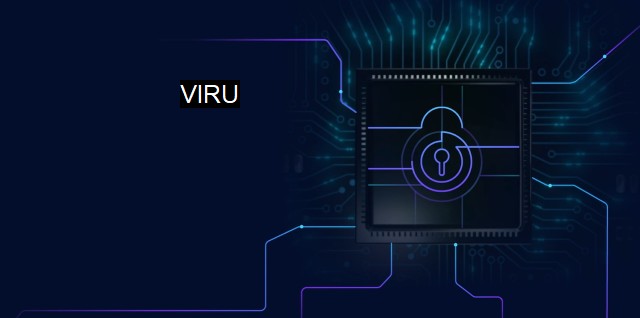What is VIRU?
VIRA Antivirus Software: Ensuring Comprehensive Digital Security in Today's Evolving Cybersecurity Landscape
VIRU is an abbreviation used in the digital environment in cybersecurity and antivirus domains, often referring to a "Virus." In this context, VIRU signifies malicious software, often shortened as "malware," designed to disrupt, damage, or gain unauthorized access to a computer or a larger server system. The implementation of VIRU might involve significant consequences, such as system malfunction, data extraction, uncontrolled advertisement broadcasting, holding the user's data for ransom, keylogging, or using users' systems for illegal activities without their permission.Viruses are among the oldest form of malicious software, first discovered in the late 1980s. They quickly drew the attention of the IT community due to their destructive potential. Antivirus (AV) software was quickly developed as a response, to identify and neutralize these threats. Anti-virus software still plays a significant part although the complexity of threats has evolved.
The functioning of a VIRU involves inserting its malignant code into other programs or files. When users execute these infected programs or files view these images or documents, the VIRU starts to replicate itself to spread within the user’s system. It employs a range of techniques to stabilize itself on the system and manage to avoid detection and extermination by antivirus software. This way, the VIRU can continue doing whatever the hacker created it to do.
In the evolving digital era, the variety of VIRU has expanded extensively. More types of malware have emerged, such as worms, spyware, trojans, ransomware, and many more. Despite the different specifics and purposes, these can also be broadly addressed as VIRU in this cybersecurity context. worms are similar to viruses but can propagate without user interaction. Spyware extracts personal information from users without their consent. Trojans seem legitimate to the user, though they are designed to cause harm.
Antivirus software now copes with much more than just viruses. Not only does it have to identify every kind of VIRU, but antivirus software must also effectively eliminate them. AV does this using several detection approaches, such as specific detection, generic detection, and advanced detection. Specific detection is identifying a VIRU by its unique binary pattern. Generic detection discovers new VIRU variants by comparing new files with existing malware families. In contrast, advanced detection uses machine learning to predict novel and unseen malware.
In addition to the substantial role played by antivirus software, its effectiveness is not absolute, at least not yet. Some VIRU types, like advanced persistent threats (APTs), with the employment of sophisticated techniques, help viruses evade antivirus software, breach systems or networks, and create long-term havoc. The infected individuals or organizations are thus not only held accountable for the recovery from the inflicted damage, but they can also be legally obliged to compensate those affected by the VIRU.
VIRU, cybersecurity, and antivirus are closely interrelated in this digital era. As VIRU's evolution persists, the need for sophisticated antivirus mechanisms is inevitable for all who are directly or indirectly connected to the cyber world, which is most of us. Subsequently, cybersecurity's demand intensifies as part of broader security considerations for maintaining the integrity of online traffic. All organizations aiming to protect their sensitive data and critical applications from threats define and enforce strict information security policies as precautions from various dimensions of VIRU that could result in detrimental impacts.
Understanding the nature and implementation of VIRU is therefore crucial for individuals and corporations alike in the digital world. Practices like regular system backups, active antivirus applications, not opening suspicious emails or visiting unsafe websites - these are all important tools in avoiding VIRU. As we move forward into a continuously evolving digital era, it is clear that focusing ongoing attention on VIRU, antivirus and overall cybersecurity measures, would serve not simply as a sound precaution, but rather as a necessity.

| | A | | | B | | | C | | | D | | | E | | | F | | | G | | | H | | | I | | | J | | | K | | | L | | | M | |
| | N | | | O | | | P | | | Q | | | R | | | S | | | T | | | U | | | V | | | W | | | X | | | Y | | | Z | |
| | 1 | | | 2 | | | 3 | | | 4 | | | 7 | | | 8 | | |||||||